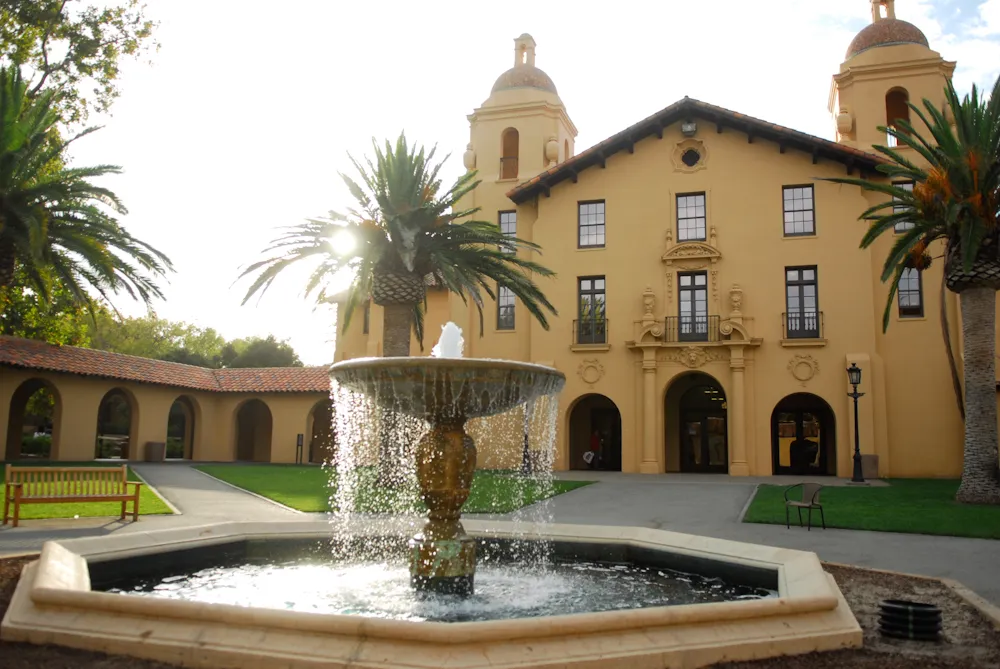Silently, first-year students from the same dorm gather in a room and wait on one side of a line drawn across the floor. A moderator reads statements aloud, and students are encouraged to cross the line individually if they believe the statement applies to them. This is Crossing the Line (CTL), and though it isn’t unique to Stanford, it has been a staple of the University’s frosh orientation activities since the 1980s. Until now.
After years of criticism, the activity once mandatory for many first-year students has been discontinued. Student Affairs spokesperson Pat Harris confirmed the news in an email to The Daily.
“In their evaluations of the program, students expressed great concern about being required to disclose some aspects of their identities in a public setting,” she wrote. “We are currently exploring alternative programming and will share more information in the near future.”
The Diversity and First-Gen (DGen) Office previously oversaw CTL, and it removed the activity from its website over the summer. In June, when CTL was still listed on the website, it was described as “a tool for promoting reflection, dialogue, empathy and authentic engagement.”
But students have repeatedly accused CTL of forcing them into emotionally painful situations. Though students are told they do not have to cross the line when a statement applies to them, Alp Akis ’21 wrote in a 2017 Stanford Review article that this caveat does not protect students from discomfort.
“First, because of the binary nature of CTL, there is no way of clarifying whether one stays behind the line because one prefers not to share, or simply because the statement does not apply,” Akis wrote. “Second, for those to whom the prompt is relevant, the choice offered is between crossing the line despite fear of exposure, or deciding not to step up and and accepting the guilt of abandoning those who did.”
In a Daily article that same year, Sejal Jhawer ’21 cited similar concerns.
“While there was a discussion circle afterwards, by not allowing for intermediary positions or a sufficient opportunity for students to explain their positions, Crossing the Line in some ways reinforced the myths about surface-level appearances that it attempted to dispel,” Jhawer wrote.
The DGen office has referred to CTL as “an opt-in experience” in the past. But as Daily staffer Willoughby Winograd ’22 pointed out in a May article, “The staff of 14 of the 18 houses with freshman that hosted CTL in 2018 told students that attendance was mandatory … The house staff in one residence admitted that absence from CTL contributed to a student being barred from attending an annual dorm ski trip, as has occurred in previous years.”
In their articles, Winograd and Jhawer both noted that mandatory attendance at CTL meant mandatory participation as well. When students begin on one of two sides rather than in a neutral space before each prompt, staying still is as much of a response as moving, they wrote.
While running for an Undergraduate Senate seat in spring, Kobe Hopkins ’22 criticized CTL in his candidate statement.
“I know the feeling of being ‘on display’ and the tokenization of POC/Womxn/Queer/FLI/Minority folks that is far too overlooked in what is meant to be a unifying and community-building activity,” Hopkins wrote. “As a senator, I will be an advocate for a direct, clear universal change at the conceptual stage of creating identity statements that are more inclusive and thoughtful for student communities.”
Hopkins was elected, receiving 525 votes from students.
Akis, Jhawer, Winograd and Hopkins all wrote that CTL was driven by good intentions. But they all agreed that the activity was failing to deliver.
Students and staff in the Rinconada frosh dorm organized “Identity Chats Plus Chocolate” last winter as a means of continuing conversations started in CTL. Janet Coleman-Belin ’19, the resident assistant who led the chats, voiced concern with what she saw as a lack of official mechanisms and resources for continuing conversations that CTL provoked.
While some students’ critiques of CTL were public and stirred discussion in comment sections and in dorm communities, it was a combination of written feedback forms and discussions with residence fellows (RFs) that ultimately led to CTL’s discontinuation, according to Harris.
“Residential Education sent a survey to student staff members in the residences, and asked staff to distribute the survey to residents electronically after CTL,” she wrote. “ResEd also sent a survey to RFs this summer, and had individual conversations with RFs.”
Though New Student Orientation begins Wednesday, the potential “alternative programming” to CTL remains unknown.
Beyond the Line (BTL) has similarities to CTL but allows for verbal discussion and was brought to Stanford in fall 2014 by Dereca Blackmon, Associate Dean and Director of the DGen Office. BTL remains on the DGen website, and it will not act as a replacement for CTL, Harris wrote.
Contact Holden Foreman at hs4man21 ‘at’ stanford.edu.
